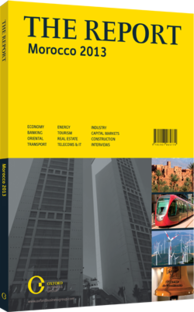In the world’s eye: Domestic commercial projects draw international support
Prior to the beginning of the global economic downturn in 2008, Morocco’s real estate market drew considerable investment from multinational firms for the development of high-end villas, hotels, resorts and leisure facilities, aimed at a primarily foreign audience. Foreign direct investment in the real estate sector peaked at Dh9.15bn (€813m) in 2008, but since then, a number of foreign developers have pulled out of tourism-related projects in order to reduce their exposure to risk and focus on core markets.
NEW MARKET: However, while some investment in tourism continues, foreign entrants are increasingly drawn to Morocco’s real estate market for the development of mixed-use projects, which include business, residential, retail and leisure properties. Consumer demand is growing in Morocco, and companies from the Gulf to Europe have launched a number of projects in conjunction with local developers to expand the real estate offers in this sector. Emilie d’Avout, senior manager for valuation advisory and consultation services at the real estate firm CB Richard Ellis (CBRE), said, “Projects such as the Anfaplace development in Casablanca respond to a growing demand for exclusive residential and commercial real estate in Morocco, the retail market being driven by the growing middle class and expansion in a number of industries.” As demand for such projects is driven by local consumers and businesses, they present fewer risks than properties reliant on external demand from tourists. Anfaplace, a mixed-use project on Casablanca’s waterfront, began commercialisation before the end of 2012. The project is being developed by the Spanish real estate investment firm Inveravante and commercialised by CBRE. It includes a 234-room hotel and 104 tourist apartments, as well as 260 residential units ranging from 60-300 sq metres, two office buildings and a 36, 000-sq-metres mall, which is set to open in February 2013. CBRE estimates that approximately 60% of business properties at Anfaplace had been sold by the end of 2012, with buyers including several multinational companies looking to set up new offices in the park. Over 75 brands had also signed on to rent properties in the Anfaplace shopping centre by the end of 2012, representing 90% of the available commercial space.
CAPITAL PROJECT: In Rabat, another major ongoing project is Bab Al Bahr, which is being jointly developed by the Bouregreg Valley Development Agency and the UAE-based Al Maabar, a real estate and investment consortium, for a total cost of €585.6m. The project has the goal of redeveloping a 70-ha area of the Bouregreg river estuary between Rabat and Salé. Bab Al Bahr will ultimately include hotels, an arts district, retail space and residences. The marina and waterfront area were completed in mid-2012, including restaurants and retail outlets, and the first residential units were beginning to be commercialised by the end of the year.
IN THE CITY CENTRE: The Spanish firm Inveravante is also overseeing the development of Tanger City Centre, another mixed-use project that will include 10,000 sq metres of office space and 800 residential units, as well as hotels, commercial spaces and leisure facilities. The project is expected to entail a total investment of Dh2bn (€178m); Inveravante has self-financed the project since its launch in 2010 for a total thus far of Dh760m (€67.6m). The first 75 mid-range apartments and 10,000 sq metres of office space were being commercialised by the end of 2012.
While the global economic climate continues to make many foreign developers wary to extend themselves beyond their home markets, Morocco’s real estate sector remains attractive for investment. Yves Delmar, the CEO of Emaar Morocco, told OBG, “The Arab Spring has had an effect on the real estate sector in a positive sense, in that it has demonstrated that Morocco is a stable destination for investments.” Many developments are now expecting to capitalise on the growing domestic market, creating a shift in foreign investment trends. A slate of new properties that are set to begin commercialisation in early 2013 will show the extent to which this trend will continue in the future.
You have reached the limit of premium articles you can view for free.
Choose from the options below to purchase print or digital editions of our Reports. You can also purchase a website subscription giving you unlimited access to all of our Reports online for 12 months.
If you have already purchased this Report or have a website subscription, please login to continue.

